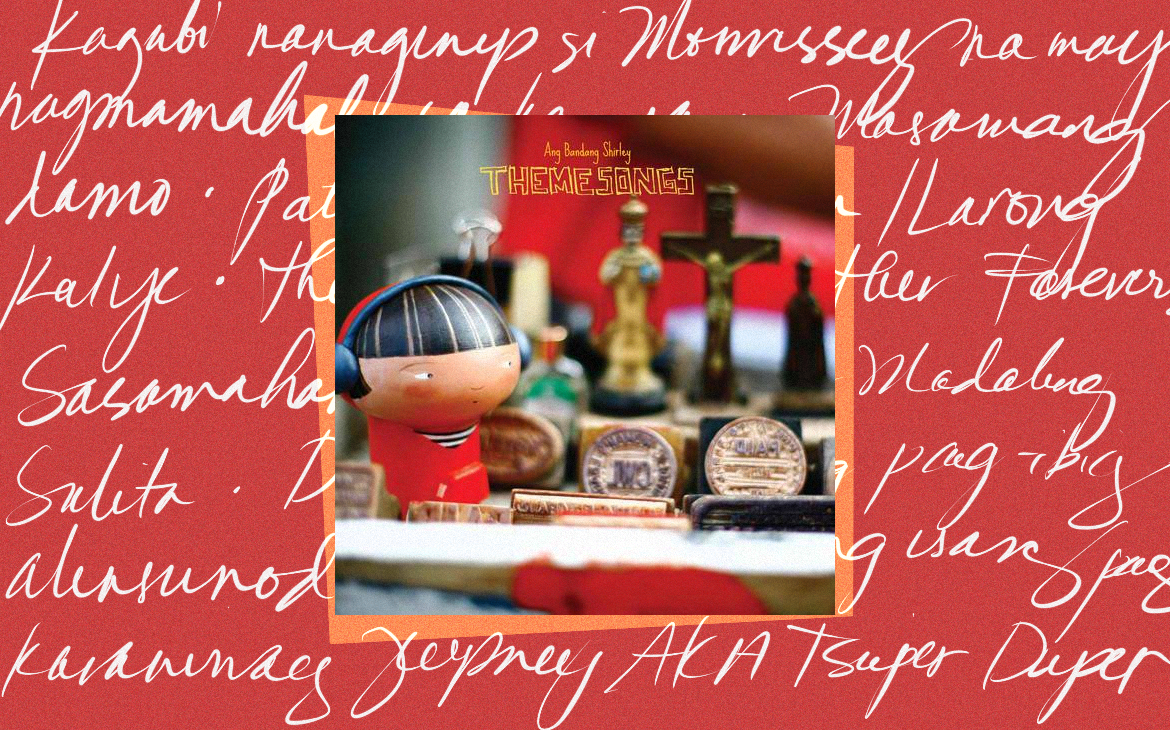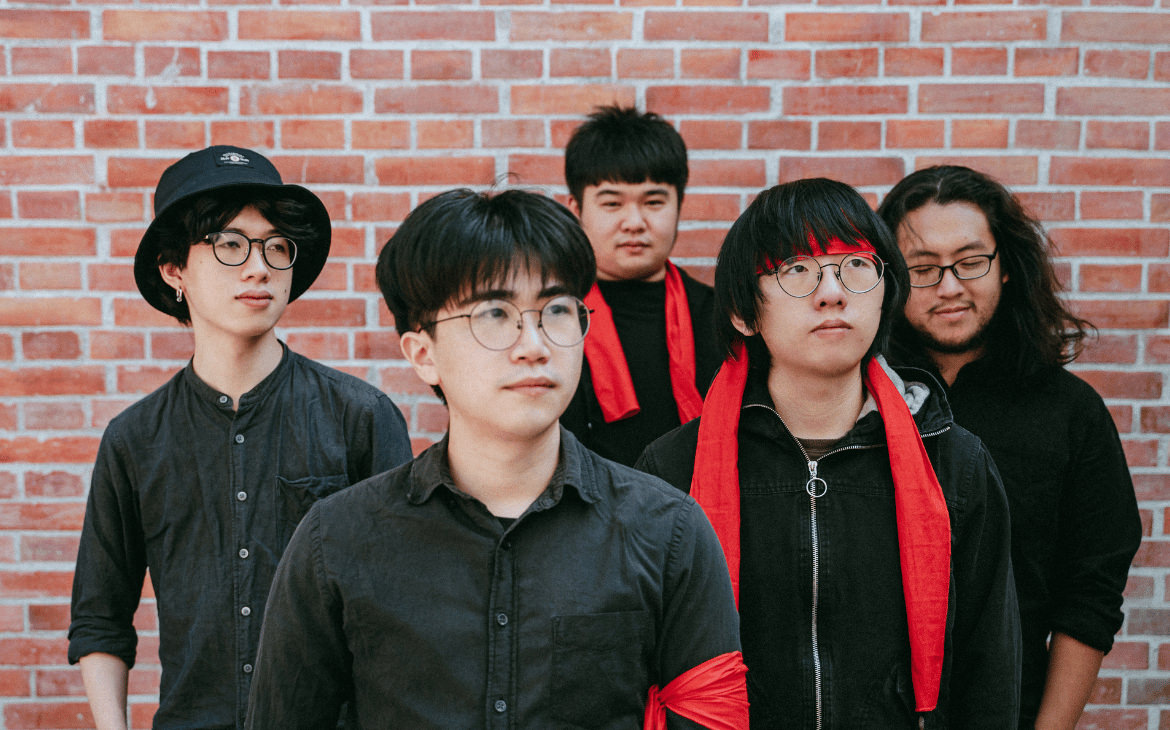The undeniable legacy of Ang Bandang Shirley’s debut record that sent the mush pit to collective surrender
Words by Ian Urrutia
Illustration by MC Galang
This article appeared originally on the now-defunct FHM Philippines website in October 2018 and has been updated.
2008 was a big year for independently produced records that were bubbling under the radar. The prevailing consensus seemed to favor the gutsy experiments of UDD‘s Bipolar or the intricate pop smarts of Ciudad‘s Bring Your Friends, two modern classics that define a generation of listeners who turned to pre-streaming online music platforms such as MySpace for fresh music discoveries. And then there’s Pedicab‘s Shinji Ilabas Mo Na Ang Helicopter, a blockbuster sophomore outing that spawned the inescapable hit “Ang Pusa Mo.” These records were a product of its time, exhausting the possibilities of bigness through moments so personal and small while making way for exciting production ideas.
But nothing quite aged gracefully as Ang Bandang Shirley‘s Themesongs. A poet laureate of the young and the restless, the indie-rock powerhouse wrote lo-fi ditties as if they were anthems: nothing short of ambition and scope, but delivered with the urgency and emotional catharsis of a pop song.
Its legacy is undeniable. From the swoony boy-girl harmonies to the introverted confessionals that run deep in the lyrics, Themesongs sets the standards for what classic indie-rock songwriting is all about. As writer Alex Almario puts it, Shirley’s debut effort introduced music fans to a distinct sound known for its “youthful sheen that never fades, never ages.” It was neither informed by its time nor by a specific generation; the songs on Themesongs lives in stories of the past and present. Everyone can relate to it, no matter what year they were born.
This is why in every small gig or festival show that Ang Bandang Shirley’s part of, scene kids would scream at the top of their lungs when old tracks like “Sa Madaling Salita” or “Bato” make it to the set list. Anyone who’s had the good fortune of catching them perform these underrated gems knows a thing or two about “mush pits”—a self-coined term used to describe fans that push and slam each other to the tune of the entire Shirley discography. Minus the broken noses and bruises, the experience is cathartic and empowering hearing the songs live, as if going through an emotional release gives one a sense of fulfillment.
Themesongs received glowing reviews when it dropped in 2008. Now-defunct local music tastemaker Revolver ranked the Shirley debut record as the second best album of that year, expressing warm approval of how the band “eloquently expresses their sentiments in a 3 to 4 minute song.” The late Luis Katigbak named Ang Bandang Shirley the Best New Artist of 2018 on the strength of Themesongs. In the annual QLE list, he wrote a blurb about Shirley’s masterful grasp of pop sensibilities. “They’re not rock gods or avant-garde experimentalists—they’re the people that you meet, when you’re walking down the street, each day,” the late music critic shares. “Except that they have an enormous talent for impeccable pop tunes and quirky-heartfelt lyrics.” Looking back at albums that turned a decade old in 2018, CNN Philippines’ Macario Naval praised Shirley’s penchant for finding a “way to appropriate elements of twee, indie pop, and conventional radio-friendly music without fully committing to the confines of any genre.”
It was neither informed by its time nor by a specific generation; the songs on “Themesongs” lives in stories of the past and present. Everyone can relate to it, no matter what year they were born.
And more than the accolades that the fuzzy indie-rock debut received in its ten-year streak, Themesongs has enough longevity to affirm its place in the canons of alt-rock greats. A lot of its muscle comes from the creative direction of Owel Alvero, whom The Rest Is Noise resident music writer Aldus Santos described as “a reluctant ship captain with the soul of a polymath and the heart of a wide-eyed college kid weaned on Ely Buendia and Raymund Marasigan.” On the classic standout “Kagabi Nanaginip Si Morrissey Na May Nagmamahal Sa Kanya,” the prolific singer-songwriter penned an instant earworm brimming with weightless wonder and charm, a winsome quality that has proven to influence a lot of young millennial bands today.
On “Patintero/Habulan/Larong Kalye,” Alvero wrote a three-part epic that welcomed good old-fashioned indie-pop with detail-oriented approach. Each transition marks a specific space, presents a variety of colors and moods, and rhapsodizes on different stages of a romantic relationship. A love metaphor doesn’t get better than that. “Together Forevers” and “Sa Madaling Salita” delivers the record’s sweetest spot, but avoids falling into the trap of sounding too saccharine and cheesy. Alvero’s sonic vernacular may be too eccentric for other people’s taste, but his knack for delivering a catchy, indelible chorus shows a remarkable balance of restraint and dedication for craft.
With that said, there’s no local record in 2008 that captures the messiness and vulnerability of young love so vividly resonant than Ang Bandang Shirley’s Themesongs. Every minute of it feels essential. Every gamble in detail and structure pays off. It’s an album worth commemorating.






